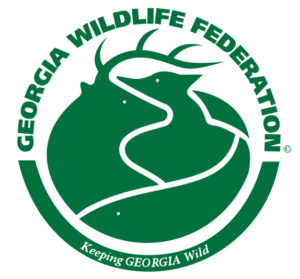For an assignment for a web content development class, Daniel Lumpkin’s idea to produce a series of informational podcasts to inspire people to give time and money to nonprofit organizations was an admirable start. He did the obligatory research to identify organizations that not only help people in need but also do so without squandering their largesse on administrative costs. That was the easy part.
In the first of his “Non-Profit Step by Step” series, Lumpkin produced a 12-minute podcast about Hunters for the Hungry, a Georgia Wildlife Federation (GWF) program that annually donates thousands of pounds of protein-rich venison to Georgians in need. He conceived it as a three-step process: immerse himself in the world of hunters; examine first-hand what it takes to turn deer meat into venison; and follow its trail to a community food bank that ultimately donates it to families.
“When I asked how I could produce compelling digital content, the answer is that you have to do something to make a good podcast,” said Lumpkin, who has never hunted before and knew almost nothing about Georgia’s deer-hunting tradition.
The podcast, is featured on the GWF’s website, takes listeners on a journey. Before taking off, Lumpkin interviewed Sam Stowe, the GWF’s program director who heads Hunters for the Hungry. Stowe described the calls he gets from single moms looking for meat to feed their families and from local food banks desperate to supply their communities with high-protein food. He also explained the hunters’ motivation to get involved. “It’s a small way for them to give back for all they get from the land,” he said.
For Lumpkin, the first step was hunting — learning everything he could about how hunters prepare, find, and pursue deer, and then going out and doing it. His journey took him to a wooded area of Paulding County where a friend’s father gave him a crash course on hunting deer — how to use a tree climber and a deer lure, and to arm and aim a crossbow. As instructed, Lumpkin returned to the woods at daybreak, suited up in the harness, inched his way about 30 feet up a tree and waited in silence. While he did not spot deer during the hours he perched in the tree, he said he experienced what hunters tell him they love about hunting.
“As I sat and watched, I was struck by the beauty of the moment, of experiencing nature first-hand,” said Lumpkin, a Powder Springs native in his second year in Kennesaw State’s Master of Arts in Professional Writing program. “I was seeing at eye-level birds and squirrels waking up, seeing the sunrise. It was quite a moment.”
Step two took Lumpkin to Eatonton, Ga., where he met with Drew Copelan, owner of the Meat Shed, which processes and packages deer meat into ground venison, steaks, and chops. The Meat Shed is one of 11 locations where hunters can drop off field-dressed deer and have it processed into venison for free, with half of the meat going to families serviced by members of the Georgia Food Bank Association. Hunters for the Hungry pays about $50 for each deer that is processed.
“I watched as they ground up and used every part of the animal, turning one deer into about 20 pounds of valuable food,” Lumpkin said. “This is no small thing. As Drew explained, the hunters who donate part of their meat are people who, for the most part, ‘hunt for their groceries.’ They are men and women who are so passionate about hunting because it’s a tradition that has been a part of their families for generations.”
For the final step of his process, Lumpkin visited the Lilburn Co-op Ministry to see how the processed venison makes its way to communities and eventually to families and individuals in need. He toured the facility where people from Lilburn, Stone Mountain and parts of Tucker can come to find food, furniture and clothing. He also talked with David Bolton, building manager, who helped him understand how important the meat donations are.
“It’s a place that operates sort of like a Walmart,” said Lumpkin. “David shared a report showing that over a three-month period, the co-op served more than 1,240 families in just this one facility — an average of about 88 families per week. That’s a lot of people. You can actually see how valuable it is to donate food and how much impact it has.”
Lumpkin hopes to continue his step-by-step series next month after completing research on organizations he is considering— one that takes care of orphans and one that works with children who have parents in prison. He admits that his approach to helping nonprofits tell their stories is difficult and time-consuming.
“Most small nonprofits don’t have advertising budgets,” Lumpkin said. “Hopefully, this is an engaging, educational and entertaining way to let audiences learn about them. It was the hard way to approach it, but hard work is
good work.”
This article was published by Kennesaw State University. GWF would like to thank Daniel for dedicating his time and effort to highlight GHFTH.

Recent Comments